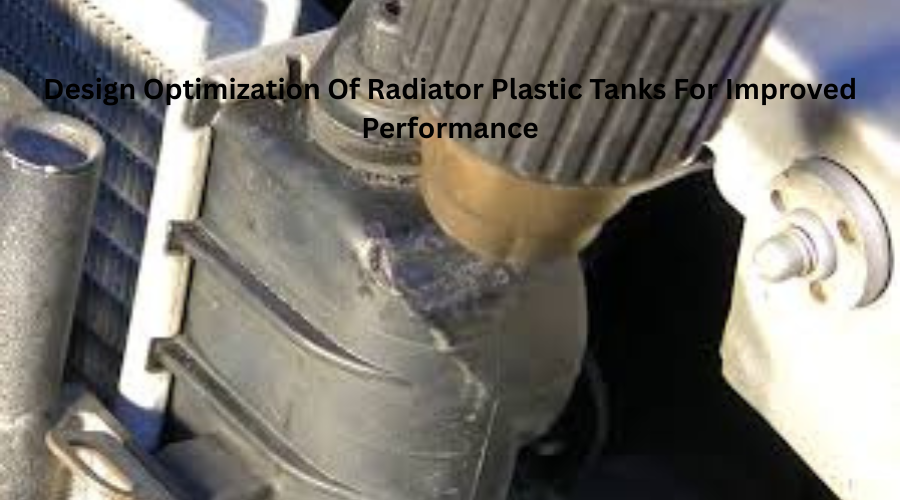Everything You Need To Know About Radiator Coolant Overflow Tanks
- linghangtechnology
- Mar 10
- 4 min read

If you've ever noticed a small plastic tank connected to your vehicle's cooling system, that's the radiator coolant overflow tank. This essential component helps manage excess coolant, ensuring your engine stays at an optimal temperature. Whether you're a car enthusiast or just someone looking to maintain their vehicle, understanding how it works can help you prevent engine overheating and costly repairs. Additionally, if you're considering upgrading parts, a custom auto radiator plastic tank could be a great investment.
What Is a Radiator Coolant Overflow Tank?
A radiator coolant overflow tank, also called a coolant reservoir, is a reservoir that holds excess coolant expelled from the radiator due to pressure changes. It serves a major role in keeping your cooling system functioning properly.
Modern cars use a pressurized cooling system to regulate the engine temperature. As the engine warms up, the coolant increases in volume and needs a place to go—this is where the overflow tank comes into play. Without it, excess coolant would be lost, and air could enter the system, causing inefficient cooling.
Now let's discuss how a radiator coolant overflow tank works?
1. Expansion and Overflow
When your engine runs, it generates heat, causing the coolant to expand. This expansion increases the pressure in the radiator. To prevent damage, the radiator cap releases some of the hot coolant into the overflow tank instead of letting it escape. This process keeps the system balanced and prevents pressure from rising too high.
2. Coolant Recovery Process
Once the engine cools down after being turned off, the coolant contracts, creating a vacuum effect. This vacuum pulls the coolant from the overflow tank back into the radiator, ensuring the system maintains the right amount of fluid without introducing air pockets.
3. Maintaining Proper Coolant Levels
The coolant overflow tank is designed with minimum and maximum level indicators. It helps you monitor the coolant levels easily without opening the radiator cap. If the coolant level is consistently low, it may indicate a leak or an issue with the cooling system.
Benefits of a Radiator Coolant Overflow Tank
1. Prevents Overheating
By providing a place for excess coolant to go, the overflow tank helps prevent overheating. It ensures that there is always enough coolant circulating through the engine and radiator.
2. Reduces Air Pockets in the System
Air pockets can lead to inefficient cooling and engine overheating. The coolant overflow tank helps prevent air from entering the system by maintaining a consistent coolant level.

3. Extends Radiator Lifespan
By regulating pressure and ensuring the radiator always has enough coolant, the overflow tank reduces strain on the radiator, preventing premature wear and damage.
4. Easy Coolant Monitoring
Since the overflow tank is transparent and marked with level indicators, checking and refilling the coolant is much easier than opening the radiator cap directly.
Signs of a Faulty Coolant Overflow Tank
Like any car component, the radiator coolant overflow tank can develop issues over time. Here are some signs that indicate it may need to be replaced:
Cracks or Leaks – A damaged tank will cause coolant loss, leading to overheating.
Coolant Overflowing Constantly – This may indicate a faulty radiator cap or thermostat.
Discolored Coolant – If the coolant appears rusty or has debris, it could mean contamination inside the system.
Low Coolant Levels – If you continuously have to refill coolant, there may be a leak in the overflow tank or elsewhere in the cooling system.
How to Maintain a Radiator Coolant Overflow Tank
To keep your cooling system in top shape, follow these maintenance tips:
Regularly Check Coolant Levels – Make sure the coolant stays between the minimum and maximum marks.
Inspect for Cracks and Leaks – If you notice any damage, replace the tank to prevent coolant loss.
Use the Right Coolant – Always use the manufacturer-recommended coolant to avoid system damage.
Flush the Cooling System Periodically – Over time, debris can build up in the coolant, affecting performance. Flushing the system ensures clean and effective coolant circulation.
FAQs
1. What happens if the radiator coolant overflow tank is full?
If the tank is overfilled, excess coolant may spill out when the engine gets hot. This can lead to coolant loss and potential overheating if levels drop too low.
2. Can I drive without a radiator coolant overflow tank?
While some older vehicles don't have an overflow tank, modern cars require it for optimal performance. Without it, excess coolant may be lost, leading to cooling system inefficiencies.
3. How often should I check my coolant overflow tank?
It's a good practice to check the coolant level at least once a month or before long trips.
4. Can a faulty radiator cap affect the coolant overflow tank?
Yes. A failing radiator cap can cause improper pressure regulation, leading to coolant not flowing correctly between the radiator and the overflow tank.
Conclusion
The radiator coolant overflow tank is a vital part of your car's cooling system, helping maintain the right coolant levels, preventing overheating, and ensuring smooth engine performance. Regular maintenance and regular replacement of faulty components will keep your vehicle running efficiently. Whether you're looking to upgrade with a radiator plastic tank or simply want to understand your car better, knowing how this system works can protect you from costly repairs in the long run.






Comments